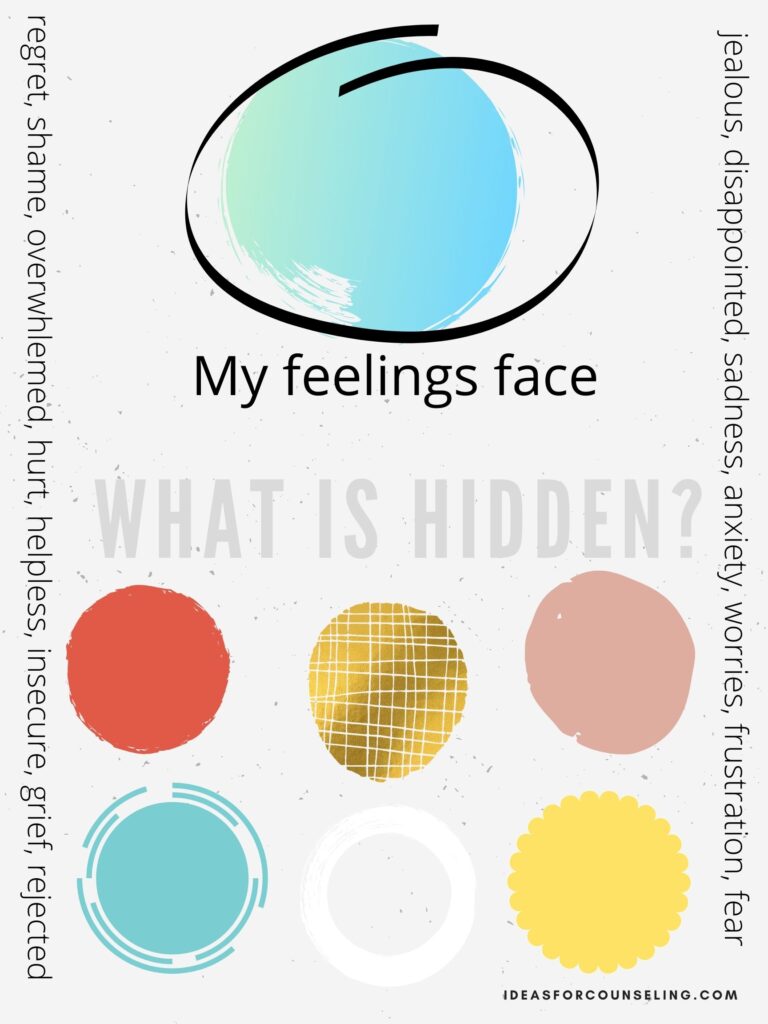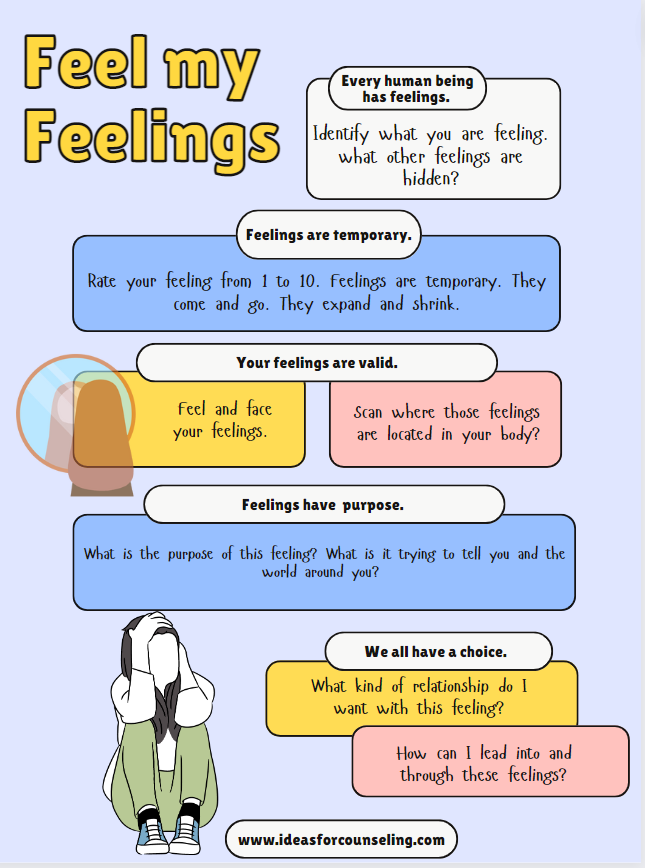Identification and verbalization of feelings
I love using stories from the previous sessions I had with the kids I provided therapy to. I still remember this kid, whom I asked why do you think we need to identify the feelings. I loved his answer “Silly Ms. Roo. It’s because you cannot tell how I am feeling if I did not tell you”. So, it’s all about teaching kids the importance of identification of feelings and helping them learn words to describe their feelings. I love using the book “The hurt” which talks about the importance of talking about your feelings and how avoiding them only leads to the feelings getting stronger and bigger.

What is hidden inside my feeling?
I really enjoy talking about how our feelings can be secondary emotions, especially anger, and how there are other feelings that might be hidden inside them. Emotion Regulation is my favorite part of the sessions, and I always come back to these questions every session. Every session, they answer questions to:
- Tell me one feeling/emotion that you encounter that week.
- What feeling do you feel the most often? How often?
- What feelings do you usually talk about with others?
- Which feeling do you tend to avoid?
- Which feeling do you feel like you have lost control of?

Websites where you can get amazing ideas
- http://www.elementaryschoolcounseling.org/identifying-and-expressing-feelings.html
- https://www.kiddiematters.com/emotion-regulation-feelings-identification-activities/
- https://lemonlimeadventures.com/activities-to-help-kids-recognize-big-emotions/
- https://www.powerfulmothering.com/30-games-activities-and-printables-to-teach-emotions-to-young-kids/
- https://www.therapistaid.com/therapy-worksheets/emotions/none
Games and Activities : Feelings identification and verbalization
- My favorite is giving them one minute to write or draw all the feelings that they can think of.
- Feeling Charade/ Pictionary.
- Sharing feelings from the past using board games like Candyland, connect 4, Zenga, and cards.
- What might be hidden in the feelings that you shared?
- What happens when we block our feelings?
- Why is it important to share your feelings?
- What does your family teach you about how to handle your feelings?
- Think of different words that pop up when you see the words like “peaceful”, “powerful”, “sad”, “fear”, “joyful”, and “mad”. It increases their creativity, and also creates a tool for exploring their hidden feelings.
- Make a story with those feelings’ words.
Homework on emotional awareness
They can draw or print different feelings and take them home. Parents can also help by asking at random moments how they are feeling. A lot of parents tend to have tendencies to only remind the children to use skills learned in the session when kids are having strong feelings. But it is very important for parents to also recognize that they need to practice identifying feelings and communicating about them at other times too so that it comes naturally when their emotions overwhelm them.
Implementing what they learned in the session. They can either write it down or try to remember when they practiced emotional awareness with these questions.
- What am I feeling?
- Why am I feeling this way?
- What else am I feeling?
- What is hidden inside my feeling?
- What is this feeling trying to tell me?
- Who should I share my feeling with?
- What is happening to me because of my feeling (my actions, my body, my words).

After they improve on emotional awareness, then comes facing the emotions/ feelings. It is incorporated with what they have been working on, but brings everything together. Feel your feelings. Rather than suppressing, avoiding or being reactive, the clients can use this to be aware of it, validate it, and restructure and have a different relationship with the emotions to make it more manageable.



